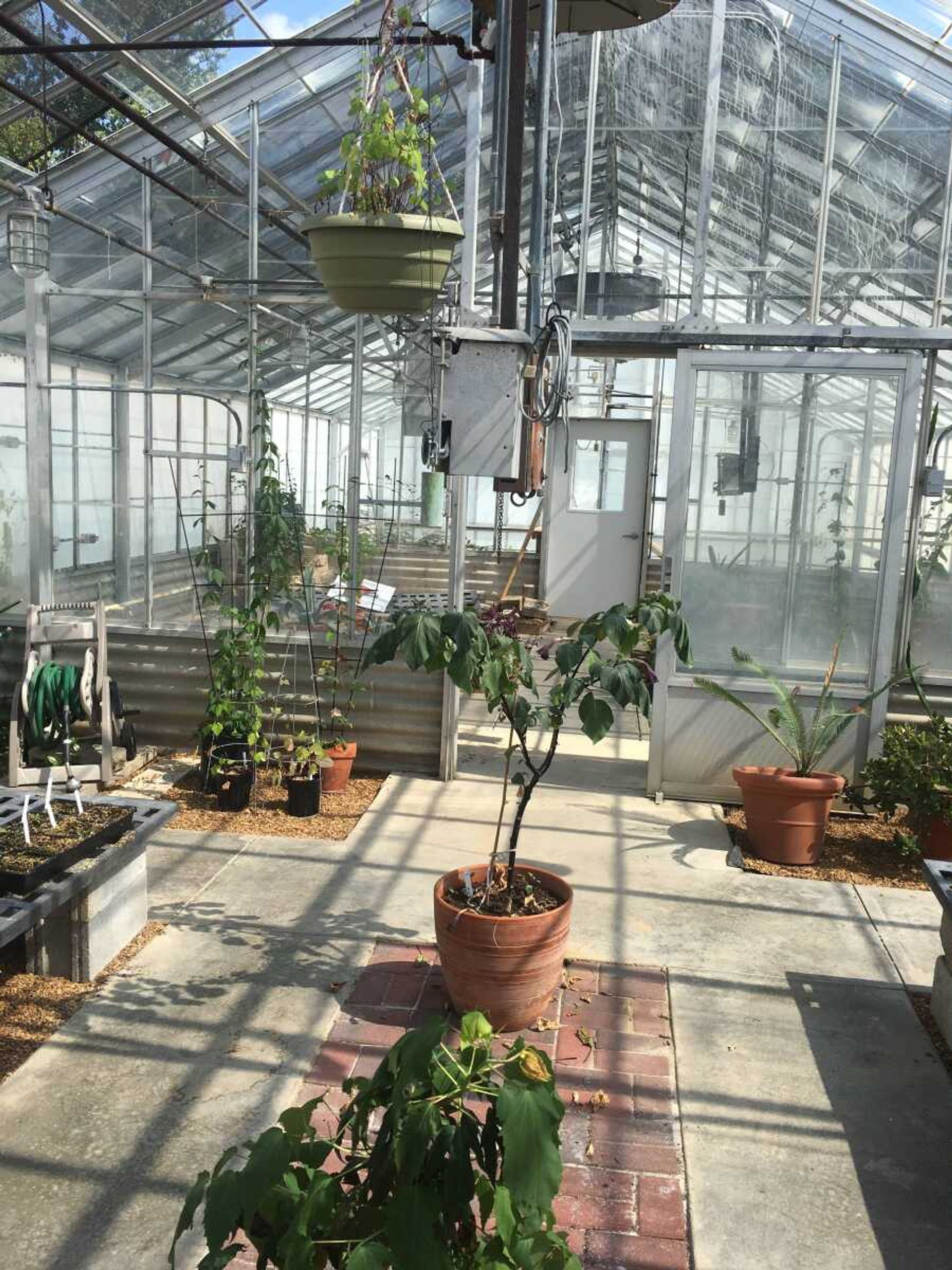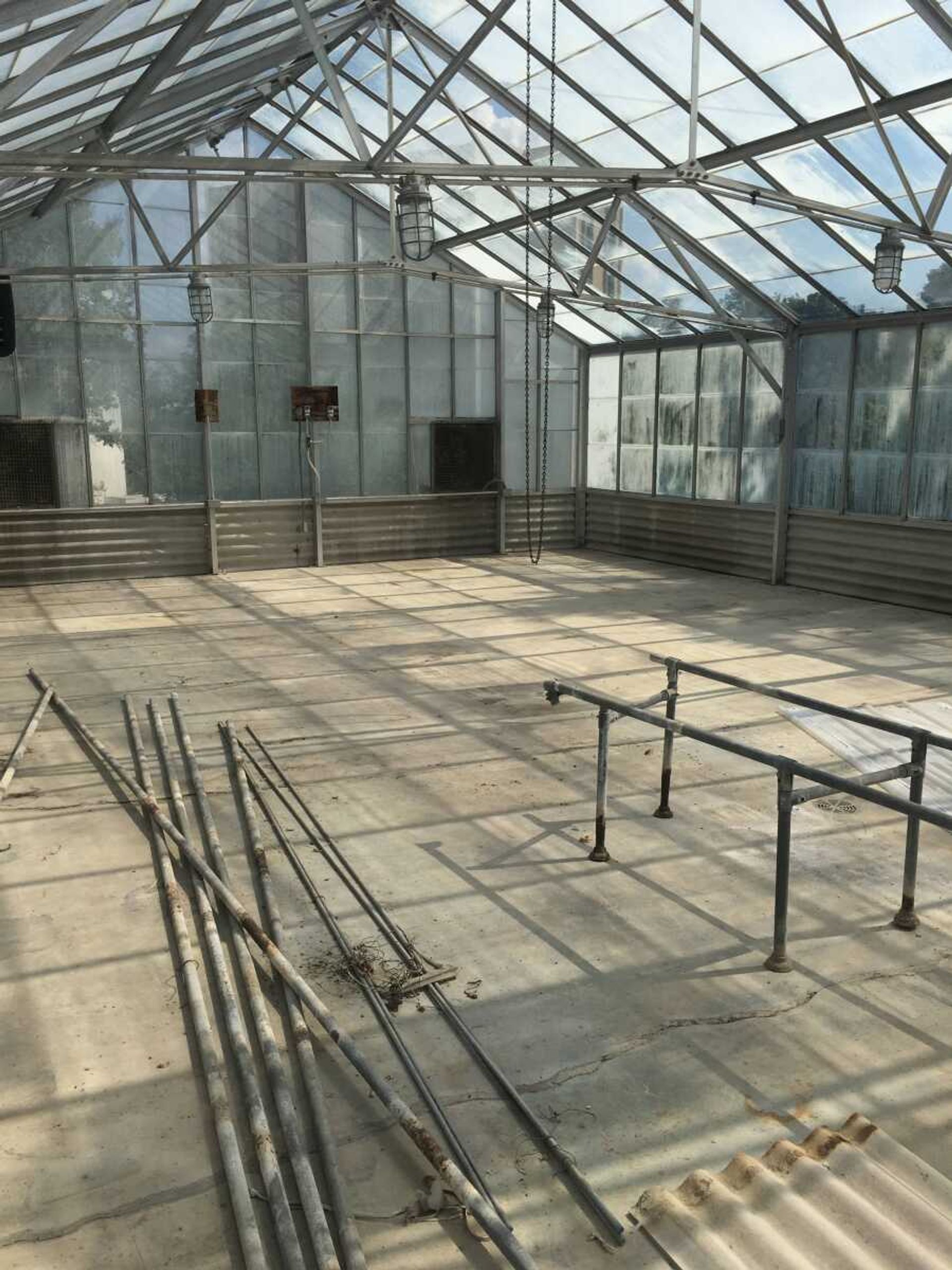Plans for the greenhouse renovations began in the fall semester of 2014. Since then, the greenhouses have been making their way to being all they can be for students to get a hands-on experience with horticulture.

There are two greenhouses for the biology department, the front and back. The front greenhouse is the teaching or diversity greenhouse.
“This greenhouse is designed to hold a lot of diversity of plants,” assistant professor of biology Jennifer Weber said.
The back greenhouse is designed for faculty and student research projects.
“It’s more sterile and controlled,” Weber said.
This past spring, students and Weber began cleaning out the front greenhouse. They cleaned out trash, debris and pulled out dead plants that had overgrown.
“The major renovations have all happened this semester,” Weber said. Weber said they had minimal repairs to the front greenhouse. Weber said it looked like ‘Jumanji’, a movie about a magical, jungle-themed board game that comes to the real world.

Things that have been repaired so far on the front greenhouse are stairs that needed replaced, new siding was put around the greenhouse, new windows were put in, and a shade cloth was put around it to help the climate inside.
She said the front greenhouse is the one that is in the best state right now but still needs some work done. Students came and helped with the landscaping inside and cleaning out the greenhouse during the spring semester. The water system and cooling and heating are what she said needed repairs in the front greenhouse.
“It provides a space where students can learn about different types of plants, learn about the varying climates that they live in, and conduct experiments in class or out of class,” Southeast Cody Bohnert said.
He also said they are able to get real hands-on experience instead of just learning from a textbook or being stuck in a classroom.
The back greenhouse got a major cleanout also but still needs some repairs, renovations and equipment. Weber said they still need a functioning cooling system, automation system, window vents, benches and sinks.
“Facilities Management came and took out the old, nonfunctional equipment,” Weber said.
Weber said the renovations are a slow process mainly because of funds.
“We have some funds but not everything we need,” Weber said. She said they have chunks of money that can be used to fix certain things but not everything all at once.
“To completely upgrade it would cost around $200,000 to $300,000 to get what we would like to have,” Weber said.
Professor and chair of the biology department James Champine said the back greenhouses was constructed around 1978 and the front before then.
“In 2011, it was announced that Magill Hall was going to be renovated and that had a profound impact on the greenhouses,” Champine said. He said while Magill was being renovated, some of the supplies were stored in the basement of the back greenhouse and the cooling system had to be shut off for around three years, which led to dry rot.
“There were no faculty who were directly involved with the greenhouses from around 2007 to 2016 until Dr. Weber joined,” Champine said.
He said there was a period from 2011 to 2016 when the greenhouses were not being properly used.
“In the fall of 2014, Student Government senator Mahala Landeros was trying to identify campus renovation projects. She met with me one day and was like an angel from heaven and said she wanted to get involved with cleaning up the greenhouses,” Champine said. A list of things that needed to be done was made. In the fall of 2015, cosmetic renovations began. Then the cleanout began from 2015 to 2016. Champine said in the fall of 2016 is when Weber, whose heart is really into it, took charge.
“A whole different place than they use to be,” Weber said.





